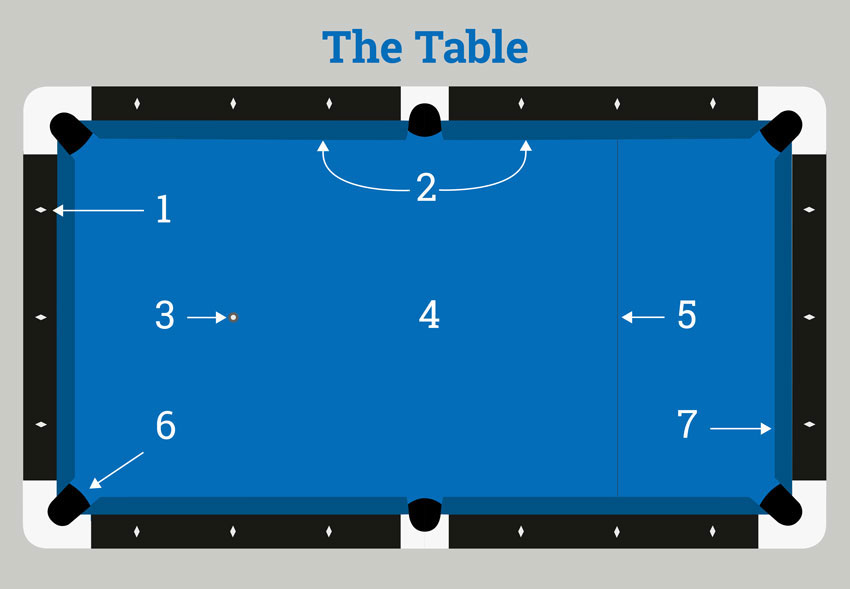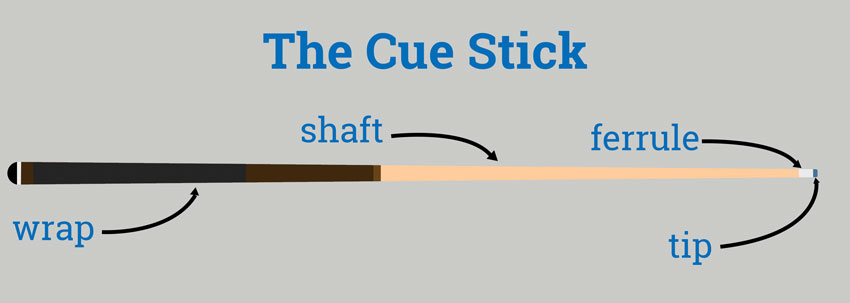Billiards is a versatile game and there are many tools and types of terminology that you may or may not be aware of. There are two main pieces of equipment that you will always deal with playing pool. The table, the balls, and the cue stick. They have different characteristics and terminology that refer to certain parts of them. This terminology is used frequently on this site so its best to go through some of these terms quickly so that we’re all on the same page.

- The dots on the table are called diamonds and they are generally used to help players as a guide for position during games.
- The rails or cushions on the side of the table are called siderails or long rails
- The dot on the table is the footspot of the table and this is where you place the head ball when you are racking the balls at the beginning of a game.
- This is called the bed of the table. It’s usually made of slate or possibly wood and is covered in cloth to make the balls roll smoothly
- This is called the headstring. The cue ball must be behind this line when you break and depending on the game when you scratch the cue ball must go behind this line.
- These are the pockets of the pool table and this is where the balls have to go if you want to continue your turn shooting in pool.
- These are called the short rails or bottom/top rails

The Tip
The most important part of the cue is the tip as this is the only part of the cue that ever touches the cue ball. Tips are generally made from leather or phenopc resin and can have different shapes, thicknesses, and hardness.
The Ferrule
A ferrule is the white part on the cue that comes right after the tip and helps absorb the deflection that occors when you strike the cue ball. Basically this helps make the cue stick much more accurate when hitting the cue ball.
The Shaft
The shaft can have a big difference on how a player plays. With differences technology that can influence deflection and the variety of preferences among players to have tapered shafts, lamenated shafts, or differences in shaft thickness can all affect how a shaft feels and performs under different players. This is the main part of the cue that your bridge hand comes in contact with so it makes sense that there are so many differences among shafts.
The Wrap
Lastly the wrap is the part of the cue that you actually hold. Sometimes you can hold a little farther back on the edge of the cue which is called the butt of the cue, but generally you will only hold the wrap. There are different types of wraps such as leather, wood, or even linen wraps depending on the preferences of the player.
